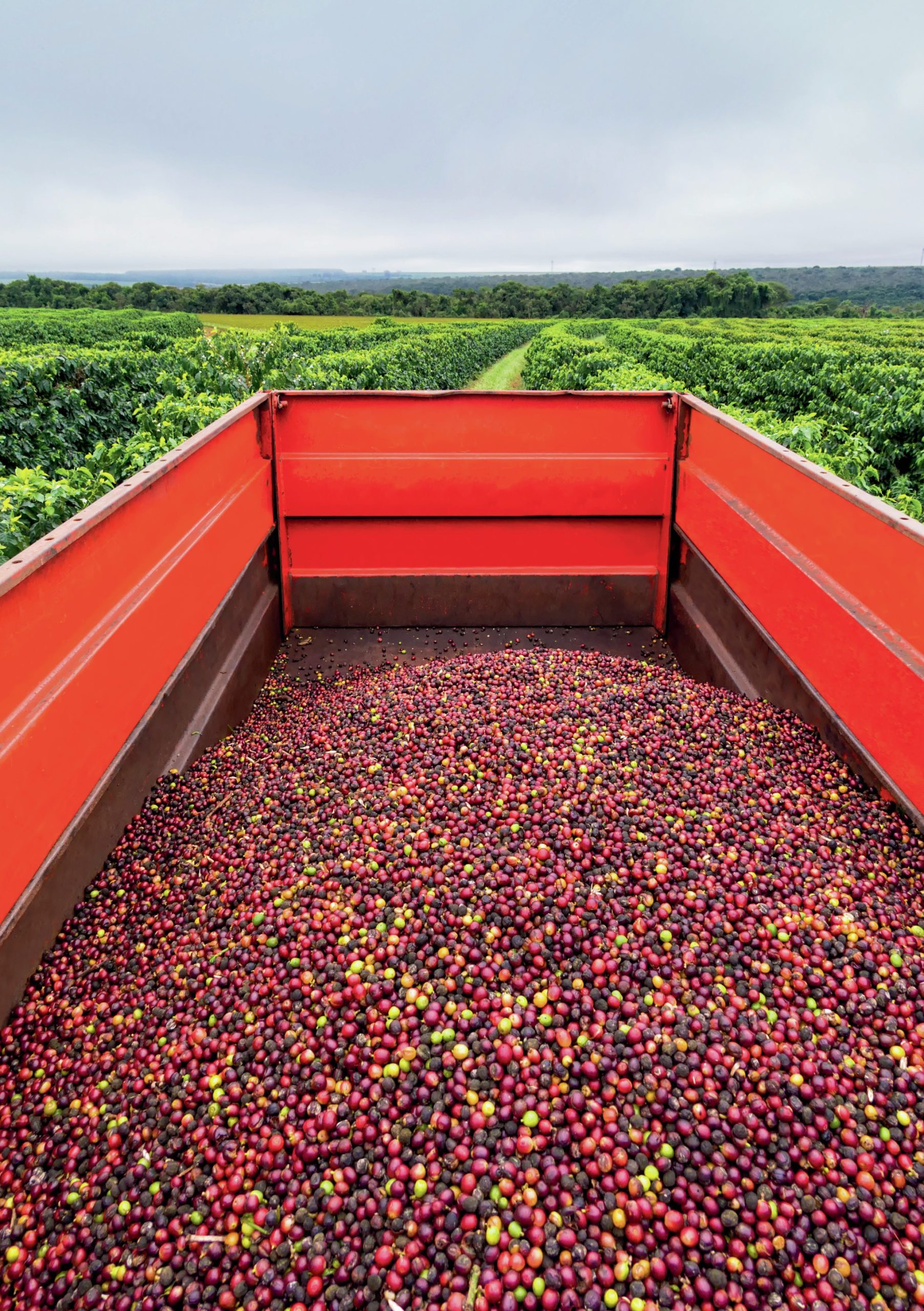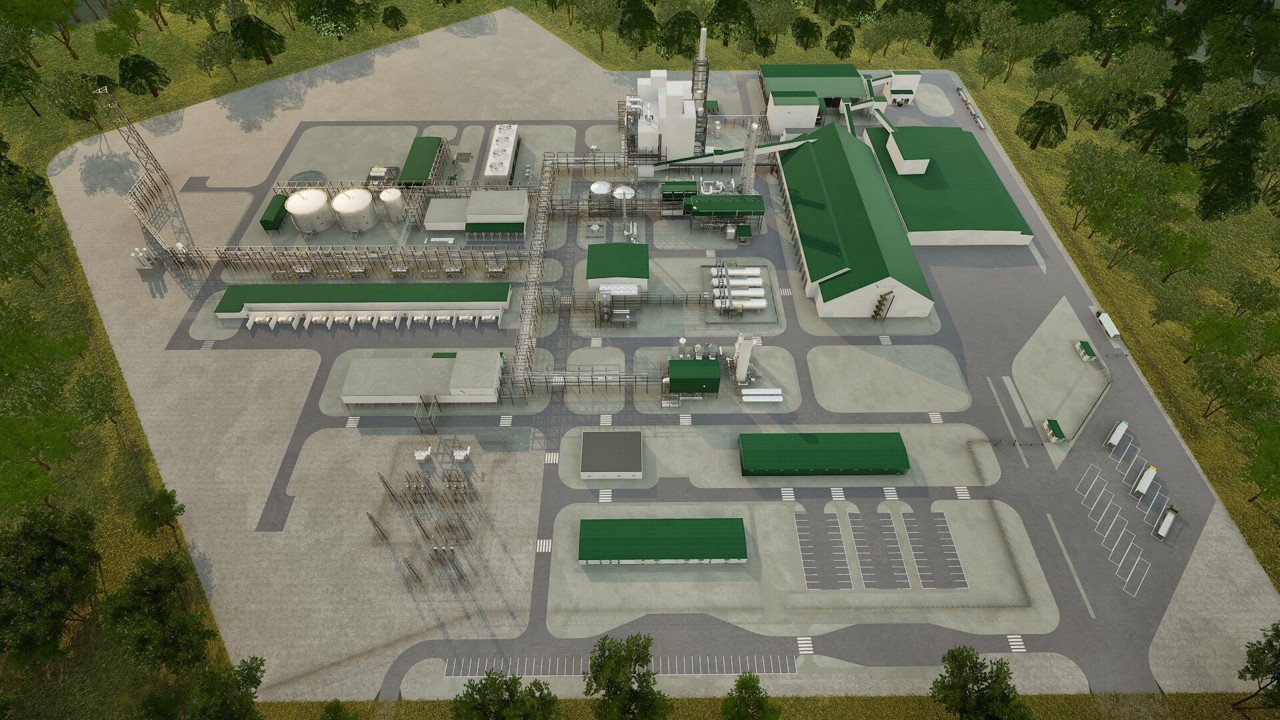Fertilizer International 511 Nov-Dec 2022

30 November 2022
A challenging year for Brazil’s fertilizer market
BRAZIL MARKET REPORT
A challenging year for Brazil’s fertilizer market
The Russian-Ukraine conflict and price volatility have affected the supply/demand dynamics of the Brazilian fertilizer market and the buying behaviour of growers. As a consequence, Brazil’s fertilizer consumption is expected to fall for the first time in eight years. Debora Simoes and Cleber Vieira of leading consultancy Agroconsult offers their key market insights.
Year starts with logistic problems and supply restrictions
The year began with higher-than-average fertilizer prices and constraints on fertilizer supplies from China, Russia, Belarus and Europe. At the time, Brazil was not so affected by these limitations – except for the higher prices – due to the country’s ability to source fertilizers from other countries. The second quarter half of the year can be, in any case, a period when global producers idle their capacities.
At the time, Agroconsult didn’t believe there would be domestic fertilizer supply shortages. Yes, it was true that some European production plants were closed or operating at low rates. But domestic Brazilian producer Unigel, for example, responded by raising the production of urea. Other nitrogen production plants in Bolivia and Nigeria also resumed operations, while India was also expected to produce additional nitrogen fertilizer volumes in 2022. Regarding phosphates availability, a range of market producers were likely to step up and meet global demand, in our view, despite the expected reduction in Chinese exports in 2022.
In the first quarter, Agroconsult was forecasting that Brazil’s fertilizer deliveries would reach 46.5 million tonnes in 2022 – a rise of 1.5 percent on the previous year. The modest year-on-year growth in fertilizer consumption was expected to be largely driven by expansions in the crop planting area, with average fertilizer application rates expected to remain flat or even slightly lower for some crops and locations. This slightly upwards trend was based on expectations of fertilizer input prices remaining at high levels, hurting barter ratios.
The Russia-Ukraine conflict and consequent supply risks
At the end of February, due to the insecurity and uncertainty provoked by the Russia-Ukraine conflict, fertilizer prices began to move strongly upwards to ultimately reach historic highs in March (Fertilizer International 508, p4). Additionally, due to worsening trade terms for producers, there were huge doubts about Russia’s ability to export volumes to Brazil, especially for potash.
Around this time, the recurring question was: would Brazil suffer from a lack of fertilizer availability? It is important to remember that Russia is a key fertilizer supplier to Brazil and – together with Belarus – accounted for more than one third of the country’s fertilizer imports in 2021 (Fertilizer International 507, p16).
Responding to this expected fertilizer availability problem, many players in Brazil’s supply chain for agricultural inputs – from NPK blending companies to fertilizer distributors and rural producers – made huge efforts to ensure adequate supplies in 2022, no matter what the price of fertilizers at any given moment.
Indeed, contrary to the downbeat market mood, Brazil’s fertilizer imports actually hit a new three-month record in the first quarter of 2022, reaching 8.67 million tonnes. This was 24.4 percent higher than January-March 2021 import volumes. Remarkably, first quarter potash imports – the fertilizer commodity that was the focus of most supply and availability fears – actually grew by 42 percent, a confirmation of robust market activity.
On this basis, if market supply continued to be strong enough, there was a view that fertilizer deliveries in 2022 were unlikely to be at overall risk – taking into account initial stock levels, domestic production volumes, and imports, all of which were higher than in 2021.
Nevertheless, Agroconsult revised Brazil’s 2022 fertilizer consumption forecast downwards in the second quarter to 45.1 million tonnes, mainly due to the negative effect of high fertilizer prices on the barter ratio. Factoring in January-June 2022 import figures, we concluded that a further 17.45 million tonnes of fertilizers would need to imported into Brazil during July-December to meet the country’s expected annual fertilizer consumption.
Although this import volume was 3.44 million tonnes lower than in the second half of 2021, it remains a significant overall challenge. Adding to the complexity, individual fertilizer commodities were also affected by different supply and availability factors:
- Potash occupies the most comfortable position. We estimate that approximately 4.8 million tonnes needs to be imported during July-December to meet Brazil’s consumption needs, a much smaller volume than in 2021. With no major market supply problems anticipated, imports and trading are likely to slow down from June onwards.
-
Nitrogen fertilizer availability is also relatively tranquil and within normal ranges. Ammonium sulphate supply is good, for example, while urea volumes are increasing. Nitrogen fertilizer imports for the last six months of 2022 are expected to be broadly similar to the second half of the previous year – volumes that Brazil was able to secure without any mishaps in 2021.
-
The phosphates supply situation is more challenging. First-half imports of monoammonium phosphate (MAP) in 2022 grew modestly year-on-year, whereas imports were significantly higher for single superphosphate (SSP) and triple superphosphate (TSP), while NP imports from China were well below normal. Consequently, phosphate supply is a major challenge, in our view, with market participants needing to pay particular attention to MAP purchases.
This is necessary to ensure adequate phosphorus for the summer grain crop and winter corn planted in September-December time.

Farmers delay buying
The fertilizer market was emitting contrary signals as the second half of 2022 began. Fertilizer statistics, for example, revealed slowing deliveries and industry activity in sharp decline. Agricultural producers, meanwhile, were still expanding their planted areas. According to them, there was no shortage of fertilizers – and neither would there be significant reductions in average fertilizer application rates.
Being aware of the fertilizer volumes already imported, farmers have chosen to wait a little longer to purchase their fertilizer inputs on the expectation that prices could drop significantly. So far, fertilizers sales for Brazil’s summer crop – with planting scheduled to begin from September onwards – have progressed more slowly than in 2021. This has increased speculation about the possibility of a last-minute bump in demand and led to strong questions about the overall scale of fertilizer deliveries.
Brazil is storing around 12 million tonnes of fertilizers currently, according to estimates, about two million tonnes above what is typical for this time of the year.
September market information
New information on market supply and availability was revealed in a mid-September report released by ANDA, Brazil’s national fertilizer association. The headline findings together with our own market analysis is as follows:
- First-half fertilizer deliveries closed at 18.18 million tonnes in 2022, down 3.1 percent year-on-year, with poor performance in June outweighing the cumulative growth in deliveries from January to May.
- The downward trajectory in fertilizer deliveries continued in July 2022. Fertilizer blenders supplied farmers with just 3.57 million tonnes during the month, 29 percent lower than in the previous July. A fall of this magnitude means that deliveries will now be unable to recover in time for the summer crop, whose planting had already started by this point.
At the same time, the fertilizer portfolio for second crop corn between now and the end of 2022, in our view, is not robust enough to compensate for the shortfall in deliveries. Therefore, based on January-August market behaviour, Agroconsult has further downgraded its 2022 fertilizer delivery estimate for Brazil from 45.1 million to 43.8 million tonnes.
Consequently, carryover stock is now expected to exceed 8 million tonnes – the largest in history – due to the further reduction in deliveries. Whether that estimate for transit stock is actually realised depends on two factors:
- Firstly, whether national fertilizer production output continues to be maintained at current levels.
- Secondly, in addition to the 4.4 million tonnes of fertilizers already landed, if another 7 million tonnes ends up being imported from September until the end of 2022. This is much smaller volume than the 11 million tonnes imported during September-December 2021.
It should be noted that, with the prospect of lower than usual fertilizer imports until the end of the year, port waiting times have been decreasing and are already lower than in 2021: only 15 percent of the volume in the line-up is facing a landing time of more than 30 days.
Year-on-year, there is also a clear contrast between the volumes of imports arriving through different ports. Compared to the same period in 2021, for example, imports through the port of Rio Grande dropped by a significant 14 percent and by 2.4 percent through Vitória. Meanwhile, there has been strong growth in import volumes elsewhere – rising by 6.4 percent at the port of Santos, 5.7 percent at the Paranaguá-São Francisco port complex and by 5.7 percent at the Arco Norte ports.
Summing up
On the supply side, our reading of the market indicates there is a lot of fertilizer product available internally in Brazil ready to be delivered. We are also seeing evidence that farmers – while leaving their decisions late – are gradually returning to make purchases. In addition to these positive indications on fertilizer buying, there is a strong impetus for farmers to expand the cultivated area of soybeans, cotton and second crop corn. There are also reports that agricultural producers are reversing their decisions to reduce average fertilization rates to avoid a drop in crop productivity. This change in decision making has even been happening in the south of Brazil (although very late). We therefore believe there could be a good volume of fertilizer deliveries in the last quarter of 2022 – possibly exceeding current expectations and helping reduce present estimates for ending inventories.






